
A terminal emulator, or terminal application, is a computer program that emulates a video terminal within some other display architecture. Though typically synonymous with a shell or text terminal, the term terminal covers all remote terminals, including graphical interfaces. A terminal emulator inside a graphical user interface is often called a terminal window.

The VT100 is a video terminal, introduced in August 1978 by Digital Equipment Corporation (DEC). It was one of the first terminals to support ANSI escape codes for cursor control and other tasks, and added a number of extended codes for special features like controlling the status lights on the keyboard. This led to rapid uptake of the ANSI standard, which became the de facto standard for hardware video terminals and later terminal emulators.
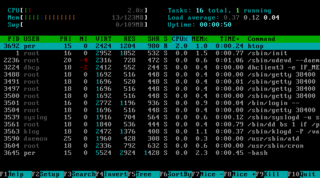
ANSI escape sequences are a standard for in-band signaling to control cursor location, color, font styling, and other options on video text terminals and terminal emulators. Certain sequences of bytes, most starting with an ASCII escape character and a bracket character, are embedded into text. The terminal interprets these sequences as commands, rather than text to display verbatim.

A computer terminal is an electronic or electromechanical hardware device that can be used for entering data into, and transcribing data from, a computer or a computing system. The teletype was an example of an early-day hard-copy terminal and predated the use of a computer screen by decades. Starting with the Apple I, computer terminal circuitry began to be integrated into personal and workstation computer systems, with the computer handling character generation and sometimes able to connect to simple consumer TVs instead of specialty CRT terminals.

The VT220 is a computer terminal introduced by Digital Equipment Corporation (DEC) in November 1983. The VT240 added monochrome ReGIS vector graphics support to the base model, while the VT241 did the same in color. The 200 series replaced the successful VT100 series, providing more functionality in a much smaller unit with a much smaller and lighter keyboard. Like the VT100, the VT200 series implemented a large subset of ANSI X.364. Among its major upgrades was a number of international character sets, as well as the ability to define new character sets.
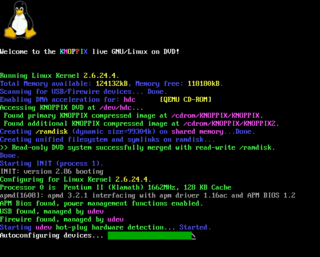
One meaning of system console, computer console, root console, operator's console, or simply console is the text entry and display device for system administration messages, particularly those from the BIOS or boot loader, the kernel, from the init system and from the system logger. It is a physical device consisting of a keyboard and a screen, and traditionally is a text terminal, but may also be a graphical terminal. System consoles are generalized to computer terminals, which are abstracted respectively by virtual consoles and terminal emulators. Today communication with system consoles is generally done abstractly, via the standard streams, but there may be system-specific interfaces, for example those used by the system kernel.
Attachmate Corporation is a 1982-founded software company which focused on secure terminal emulation, legacy integration, and managed file transfer software. Citrix-compatibility and Attachment Reflection were enhanced/added offerings.

xterm is the standard terminal emulator for the X Window System. It allows users to run programs which require a command-line interface.

The VT50 was a CRT-based computer terminal introduced by Digital Equipment Corporation (DEC) in July 1974. It provided a display with 12 rows and 80 columns of upper-case text, and used an expanded set of control characters and forward-only scrolling based on the earlier VT05. DEC documentation of the era refers to the terminals as the DECscope, a name that was otherwise almost never seen.

The VT05 is the first free-standing CRT computer terminal from Digital Equipment Corporation introduced in 1970. Famous for its futuristic styling, the VT05 presents the user with an upper-case-only ASCII character display of 72 columns by 20 rows. The VT05 was a smart terminal that provides cursor addressing using a series of control characters, one of which allows the cursor to be positioned at an absolute location on the screen. This basic system provided the basis of similar systems in the later and greatly improved VT50 and VT52 series.
The LK201 is a detachable computer keyboard introduced by Digital Equipment Corporation of Maynard, Massachusetts in 1982. It was first used by Digital's VT220 ANSI/ASCII terminal and was subsequently used by the Rainbow-100, DECmate-II, and Pro-350 microcomputers and many of Digital's computer workstations such as the VAXstation and DECstation families.

The VT420 is an ANSI standard computer terminal introduced in 1990 by Digital Equipment Corporation (DEC). The 420 is the only model in the 400 series, replacing the VT320. There are no color or graphics-capable 400 series terminals; the VT340 remained in production for those requiring ReGIS and Sixel graphics and color support. The entire lineup of VT300s and VT420 was eventually replaced by the relatively unknown VT500 series starting in 1993.

The Gold key is a computer keyboard key used as a prefix to invoke a variety of single-key editing and formatting functions. Usually located in the top-left position of the numeric keypad on platforms such as the VT100, it is the signature element of a consistent user interface implemented by Digital Equipment Corporation (DEC) across multiple product lines.
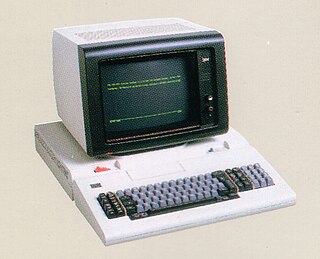
The IBM 3101 ASCII Display Station, and IBM's subsequent products, the 3151/315X and 3161/316X, are display terminals with asynchronous serial communication that were used with a variety of IBM and non-IBM computers during the 1980s–90s, especially the data processing terminals on non-IBM minicomputers, IBM Series/1 and IBM AIX computers.
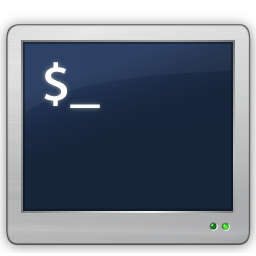
ZOC is a popular computer-based terminal emulator and Telnet software client for the Microsoft Windows and Apple Macintosh macOS operating systems that supports telnet, modem, SSH 1 and 2, ISDN, serial, TAPI, Rlogin and other means of communication. Its terminal emulator supports Xterm emulation with full colors, meta-keys and local printing, VT102, VT220 and several types of ANSI as well as Wyse, TVI, TN3270, and Sun's CDE. It supports full keyboard remapping, scripting in REXX and other languages, and support for named pipes.

The Linux console is a system console internal to the Linux kernel. A system console is the device which receives all kernel messages and warnings and which allows logins in single user mode. The Linux console provides a way for the kernel and other processes to send text output to the user, and to receive text input from the user. The user typically enters text with a computer keyboard and reads the output text on a computer monitor. The Linux kernel supports virtual consoles – consoles that are logically separate, but which access the same physical keyboard and display. The Linux console are implemented by the VT subsystem of the Linux kernel, and do not rely on any user space software. This is in contrast to a terminal emulator, which is a user space process that emulates a terminal, and is typically used in a graphical display environment.

Kmscon is a virtual console that runs in userspace which David Hermann created to replace the Linux console, a terminal built into the Linux kernel. Kmscon uses the KMS driver for its output, it is multiseat-capable, and supports internationalized keyboard input and UTF-8 terminal output. The input support is implemented using X keyboard extension (XKB). Development of Kmscon stopped in March 2015. There was a successor project called systemd-consoled, but this project was also later dropped in July 2015.
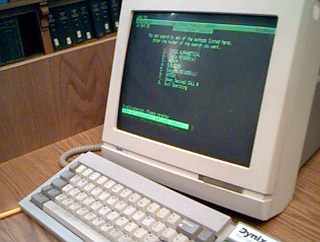
The Dynix Automated Library System was a popular integrated library system, with a heyday from the mid-1980s to the late-1990s. It was used by libraries to replace the paper-based card catalog, and track lending of materials from the library to patrons.
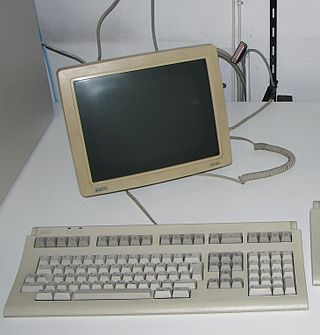
The VT320 is an ANSI standard computer terminal introduced by Digital Equipment Corporation (DEC) in 1987. The VT320 is the text-only version, while the VT330 adds monochrome ReGIS, Sixel and Tektronix 4010 graphics, and the VT340 adds color.
The VT1000 was a monochrome X Window System computer terminal introduced by Digital Equipment Corporation (DEC) in April 1990. The VT1200 replaced the VT1000 later that year, consisting of a code update and a bump in the RAM from 1 to 2 MB. All of the VT1000 series communicated with their host computers over Ethernet, supporting TCP/IP as well as DEC's terminal-oriented Local Area Transport (LAT) protocol. They also included standard serial ports to allow basic terminal emulation, built into the ROM.















